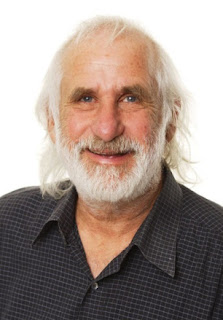Larry Cohen is the author of the new book Prevention Diaries: The Practice and Pursuit of Health for All. His other work includes the book Prevention is Primary. He is the founder and executive director of the nonprofit Prevention Institute, and he is based in Oakland, California.
Q: How did you come up with the
idea for Prevention Diaries?
A: I came up with the idea for
the book for the same reason that I became involved with prevention overall. I
realized many people were getting sick or injured,
and there were solutions that would reduce the likelihood and frequency of
injuries and illness overall.
I felt a strong conviction that I needed to communicate not
just to colleagues about how to do it, but that people everywhere needed to
understand there are simple strategies we can engage in that can save lives,
reduce misery, and save money at the same time.
Q: The book includes your own
personal experiences as well as discussions of various key issues. How did you
decide on the book's structure, and did you write it more or less in the order
in which it appears?
A: I wanted a structure where the
stories would build on one another, and it seemed like for many readers,
clustering the book by topic would be most engaging. I added the interludes because
I wanted to make the point that our health deeply matters and is a deeply
personal issue, and our conclusions about how to achieve well-being are shaped
by our personal experiences.
As for the experience of
writing it, I kept going back and forth between different chapters as my reflection
while doing one would change my perspective on another.
Q: You write, "People
often ask how we can measure the impact of prevention if we can't see it. I
respond that we can measure prevention over time in terms of lives saved and
money saved." Can you say more about that?
A: An example from my own work
would be smoking reduction. When I started this work, significantly more people
smoked than do now across the U.S. In California, for example, the percentage
of smokers has dropped by more than half in a couple of decades— clearly that’s
a measure of prevention and the most dramatic reductions align with norms change
and regulations.
Another example: we’ve seen young children’s death rates
fall dramatically as we’ve watched car seat laws being implemented and other
safety measures developed to protect children. In every case where we have developed major
consistent prevention strategies, we clearly see major declines across the
population, and these declines fairly consistently follow the implementation of
the prevention strategies.
Q: What do you see looking
ahead when it comes to prevention initiatives?
A: Some of the initial rhetoric
following this election has been about reducing regulations, and I worry that
many regulations that protect health and safety may get swept up in this, when
in fact they serve to protect us all.
On the positive side, we’ve seen tremendous success in
prevention and a recognition by the healthcare sector that community-wide
change is key to reducing the pressure of illness and injury on their system—so
I think there is still going to be an important outcry for prevention strategies.
And we now know, having learned from our successes, where to
go and what to do next. Decisions about whether it’s financially beneficial to
help maintain people’s health will be key. Given the national political change,
probably the venue of a lot of our work over the next period of time will be
more local and statewide.
Q: What are you working on now?
A: Trying to further advance and spread the word
about the work of Prevention Institute in promoting prevention and well-being.
Two of our initiatives in particular are 1) looking at the link between
emotional health and well-being and physical health, and 2) focusing on what we
call community-centered health—that is, how to get the healthcare system better
aligned with community strategies that promote health.
Q: Anything else we should
know?
A: There
are several parts of the book where I walk the beach with my dog, which I find
incredibly invigorating. It’s a personal reminder that our environment—personal,
physical, social, and emotional— is central to our well-being. I think for all
of us, a healthy environment is critical and can be restorative.
--Interview with Deborah Kalb



No comments:
Post a Comment